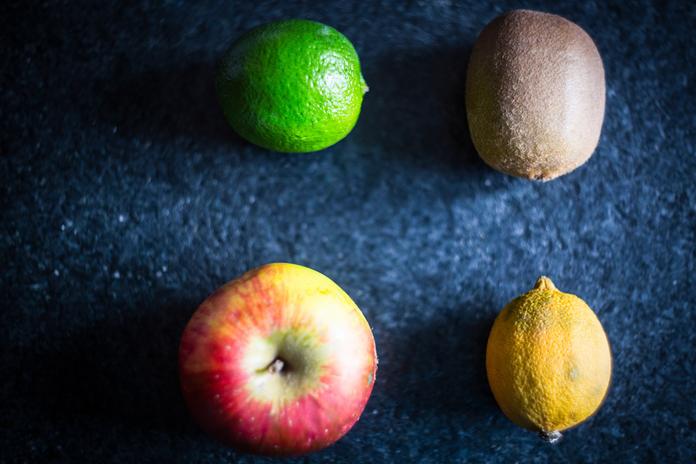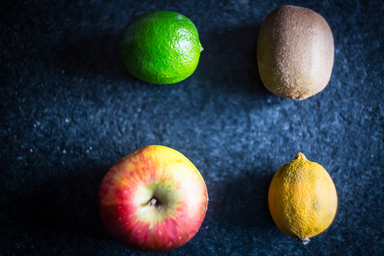No one really looks at food labels because it’s seen as an unnecessary inconvenience, not to mention so many ingredients listed barely sound like English. Why read something you can’t make sense of?
Since no one looks at them, it’s easy to sneak by ingredients that are less-than healthy.
1. Sneak Trans-Fats
Products might say they’re trans-fat free, but that’s not always the case. Let’s look at margarine for a second. It’s generally healthier than butter because it contains less calories and is made out of vegetable oils, which contain ‘good fats’. They also contain less saturated fats.
But, some sneak trans-fat in. Like saturated fats, trans-fats raise the level of your bad LDL cholesterol and lower the level of your good HDL cholesterol.
When looking at a product that claims it’s trans-fat free, look out for the words ‘hydrogenated’ and ‘partially hydrogenated’ added as a prefix to a type of oil on the ingredients list. ‘Partially hydrogenated soybean oil’ is one example. That prefix actually indicates the presence of trans-fats.
Trans-fats found in ‘hydrogenated’ ingredients cause a variety of health problems because of their chemical structure and how they stack when digested. They slow down your metabolism over time and suppress the function of your thyroid gland. Moreover, trans-fats increase the risk of developing heart disease by clogging your arteries, and also increase the risk of having a stroke and developing type II diabetes.
2. MSG
Most people have heard the term ‘MSG’ thrown around, but what is it exactly? It’s a flavour enhancer, although strangely enough, it doesn’t taste like anything alone. It actually stands for monosodium glutamate, but has a variety of names, including maltodextrin, sodium caseinate, autolyzed yeast, autolyzed vegetable protein, hydrolyzed vegetable protein, yeast extract, and citric acid.
It’s an incredibly common ingredient found in things like canned soup, ‘diet’ pop, salad dressing, fast foods, snack foods, packaged frozen foods, and a lot of products that contain a beef or chicken flavouring. It’s common.
It stops your body from actually communicating with your brain to let it know that it’s full, leading you to eat more than you otherwise would, and also tells your body to release insulin which promotes fat storage. It’s a known cause of obesity, and affects the probability of developing type II diabetes.
3. BHA (BUTYLATED HYDROXYANISOLE) and BHT (BUTYLATED HYDROXYTOLUENE)
These are two antioxidant preservatives that can be found in cereals (most Kellogg’s cereals have it, chips, chewing gum, processed meat, and other snack foods to keep them from going bad.
The World Health Organization has it listed as a possible carcinogen (cancer inducing substance).
Furthermore, it contributes to poor sleep and appetite, harms the liver and kidney and promotes hair loss.
4. Artificial Sweeteners
Products that claim to be ‘sugar free’ or have ‘less sugar’ are technically telling the truth. But the replacement is usually either sweetening the product entirely with an artificial sweetener (hence ‘no sugar’ products) or partially with an artificial sweetener (which explains having ‘less sugar’).
Artificial sweeteners can be found in low calorie beverages, chewing gum, cereal, and most things listed as ‘sugar free’ and are in forms like aspartame and sucralose.
While it’s not ‘dangerous’ as sources tend to claim, it is better to avoid, especially if you’re intending to use artificial sweeteners to lose weight. The opposite is true. For example, the common artificial sweetener, aspartame, actually causes overeating, and promotes weight gain and type II diabetes.
How does that work if drinks that have artificial sweeteners are calorie free? When you eat something sweet, like cake, the body expects you to be consuming calories alongside that. But, it gets confused with sweeteners like aspartame which are 200 times sweeter than sugar, but contain no calories. As a result, the lack of a proper payoff leads to you seeking out more sweets, like an addiction.
Why are we using this stuff instead of sugar again?
5. Titanium Dioxide
This one is an odd one. Titanium dioxide has its use in places beyond the food industry as an industrial pigment, an ingredient in sunblock and a wastewater cleaner. It’s used to whiten products, to prevent them from clumping, and to give them a smooth texture. This stuff is in our food?
In food, it’s often found in desserts, and even gives chocolate a smooth finish.
Besides all this, it’s a possible carcinogen.
A Healthy Diet
Keep in mind, this isn’t some kind of baseless overreaction; none of these ingredients are deadly, but long term, they can lead to a variety of health problems, since we’re eating all this stuff.
These ingredients also lead to weight gain, and if you’re trying to lose weight, may be the less obvious obstacle in your way. It’s not just about how much you eat, it’s what you eat.
This list of ingredients (along with a plethora of other unlisted ingredients) shows that watching your packaged food consumption is a good thing to do to take control of your health. Moderation of how much junk you consume is key.
The healthiest diet that supports long term health really does start from your own kitchen, where you know exactly what you’re putting in.
Image Sources
3. https://s-media-cache-ak0.pinimg.com/originals/51/f4/95/51f4958d4486a25e241ef67fc182c97a.jpg
4. https://s-media-cache-ak0.pinimg.com/564x/f6/d9/32/f6d932a1199be898f2d428e1c5058814.jpg
6. http://www.timigustafson.com/wp-content/uploads/2011/06/Magnifying-glass-on-salad.jpg
7. http://www.rebootwithjoe.com/wp-content/uploads/2012/09/veggies.jpg
8. http://green-mom.com/wp-content/uploads/2012/07/foodlabel-cartoon.jpg


